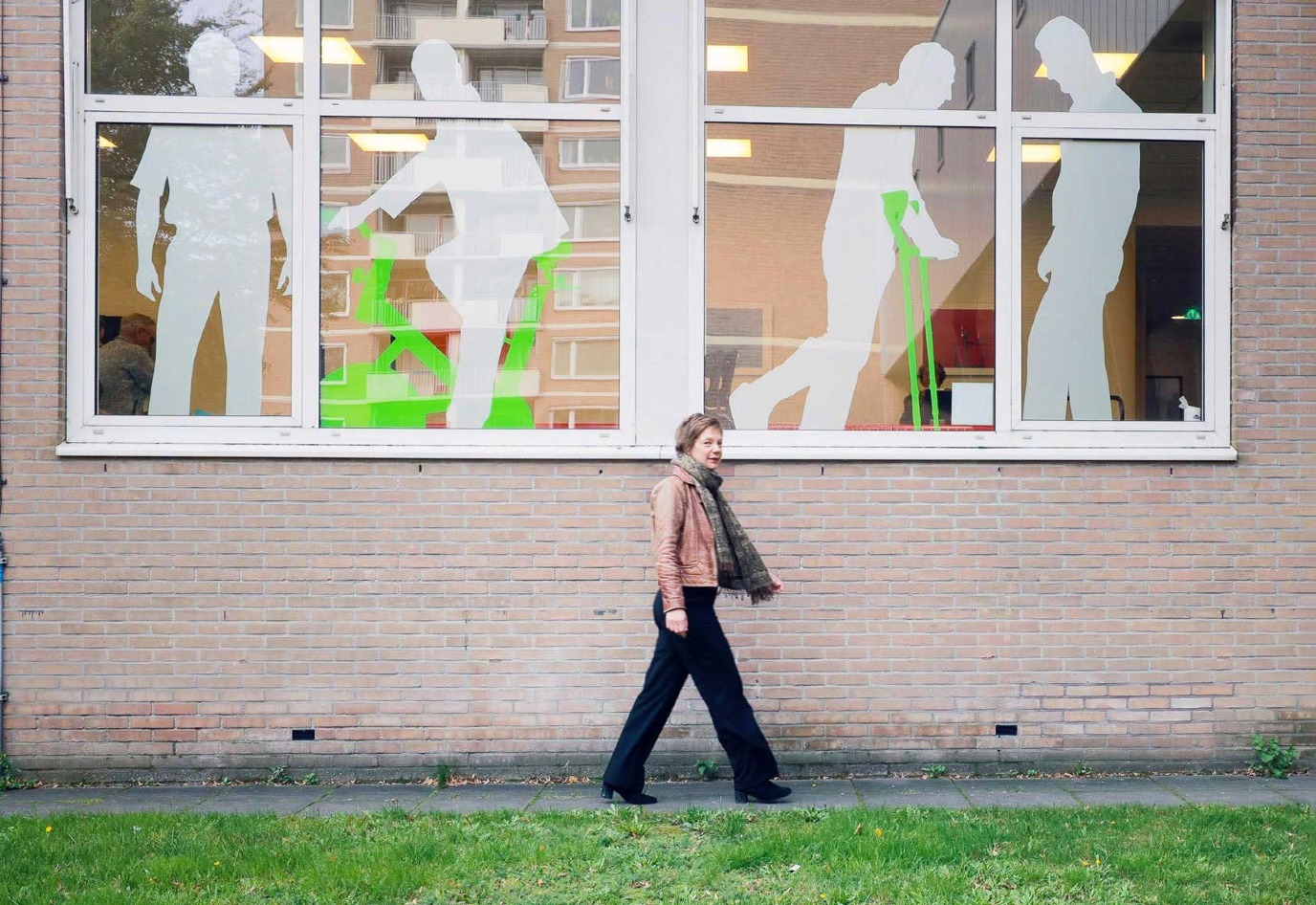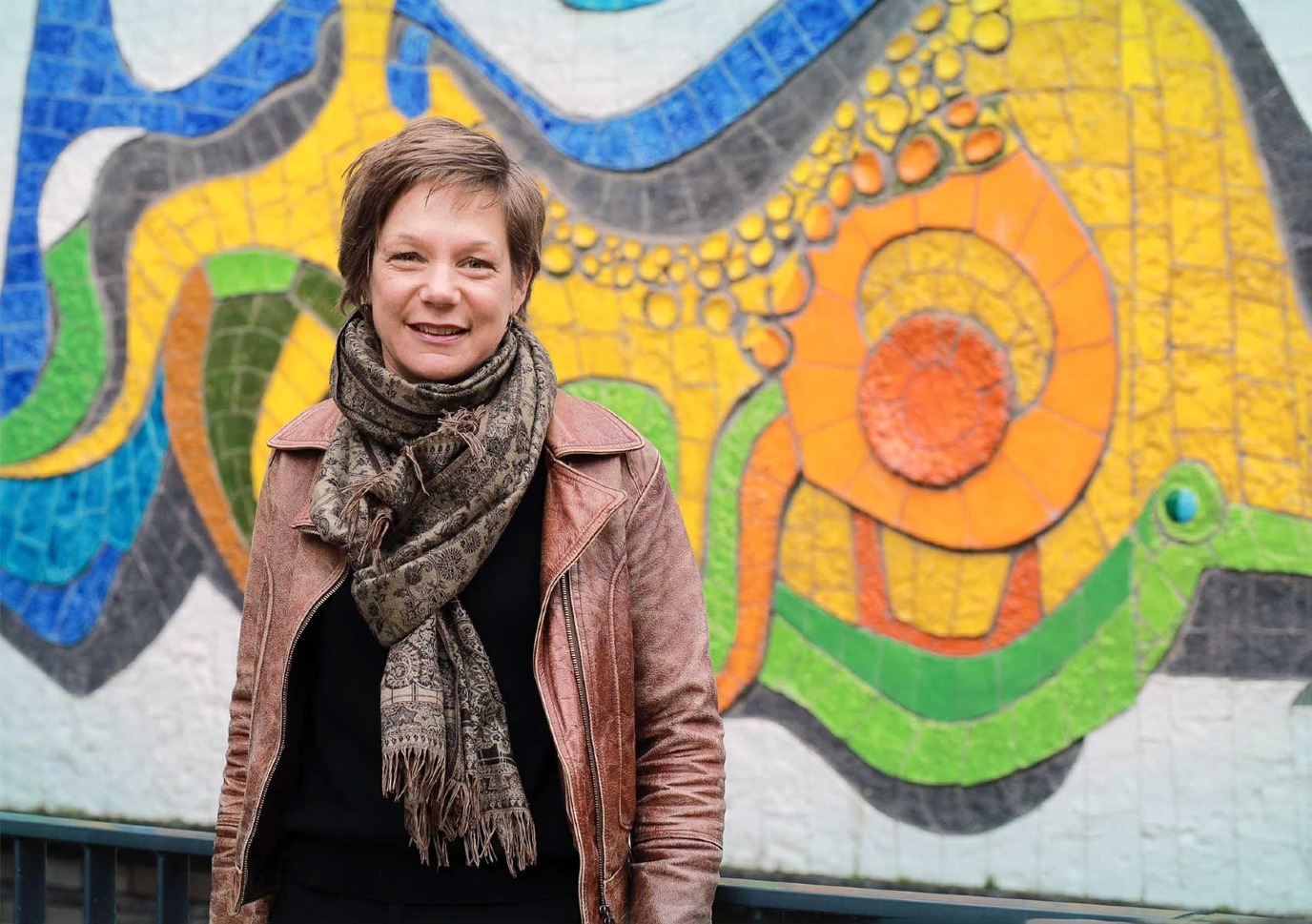Space to grow old happily

Louise Meijering, Professor of Health Geography, has just finished her inaugural lecture . A box of booklets still sits in her office. On the front is the title, ‘Ruimte voor gezondheid’ [Space for health] and some images of wooden houses and trees. Appropriate, because the story she wants to tell is that of designing sustainable communities in an ageing society. ‘There are advantages to simplifying laws and regulations. Especially for people in vulnerable positions.’
Text: Merel Weijer, Corporate Communicatie / Photos: Henk Veenstra
Too theoretical
The road to the inaugural lecture was long and windy. In 2006, she obtained her PhD in cultural geography, but she immediately left science afterwards. ‘It was all just too theoretical for me and lacking societal relevance.’ Her next steps included volunteering in Africa, a move to Sweden, and then back home to the Netherlands, where she went to work for a network organization for urban and regional planning. While she enjoyed the work, she needed more substance. So, in 2009, she returned to her alma mater. She spent several years as an assistant professor, until she decided on a stronger focus for her academic career. ‘This meant making a clear plan, obtaining research funding, doing many projects, and writing publications on them.’ She is very successful, and the icing on the cake was her appointment as Aletta Jacobs Professor in 2020.
At home in the neighbourhood
She now feels like she is in the right place. As a health geographer, she researches the relationship between the wellbeing of people and the environment they live in. Does someone feel at home in their house and in their neighbourhood? She mainly finds groups of people interesting that are not extensively represented in research. These include the elderly with physical disabilities, but also immigrants and people living in long-term poverty. Groups for whom it is a challenge to have an optimal living environment. She researches the interplay between the physical environment (your house, your neighbourhood) and the social environment, the people. Who do you live with, who are your visitors, do you feel at home in your neighbourhood?

Sustainable living communities
With an ageing population and elderly care that is under pressure, this is a current but complicated issue. How do you design neighbourhoods in ways that allow for the emergence of networks in which people feel at home and help each other? Meijering believes change is needed in this area. Communities need to be set up differently. ‘In neighbourhoods with only busy double-income families, there is not a lot of time and scope to provide care to others outside the immediate circle. Sustainable, future-proof communities need to be designed in which people can grow old happily, where young people can work, and where families can live.’
Thinking about the future sooner
And yet, Meijering realizes there is no ready-made solution. She believes progress can be made when people start thinking about how things should be arranged when they are older, earlier in life.. Many people only start thinking about this when it is already too late and a solution is urgently needed. In addition to that, it is important that there are places available where people can and want to go. At present, there is no centralized organization in place, and these matters are handled by many different organizations. Thankfully, there are examples of good things happening. Meijering gives the example of a project in Vledder where a healthcare cooperative was founded. The village had a facility built for elderly people so they can remain close to home. The facility also provides work for young people, lowering the risk of them leaving the area. Meijering is interested in looking at the success factors of these types of initiatives to see if something similar could be done elsewhere as well. She says the government and housing corporations also have a role to play. ‘There are advantages to simplifying laws and regulations. Especially for people in vulnerable positions.’
Healthcare without rules
She was able to see up close and personal that things could be simpler. At the beginning of her career, Meijering was involved in research conducted at an organization for elderly care. Healthcare workers there felt that they were overwhelmed by all the rules imposed on them by insurance companies and healthcare offices, and that they spent too much time filling in forms, preventing them from providing real care. Interestingly, they discovered during the study that they had actually come up with some of the rules themselves. They had imposed rules on themselves because they had always been required to provide justification, and attempted to mitigate the risks involved in this way. Becoming aware of this has helped them. ‘They took a really good look at which rules they could eliminate but also mainly at what people themselves want and how they can make this possible. And, ultimately, that does not have to be too complicated.’

Understanding each other
As a geographer, Meijering studies spaces. How can you design a nursing home to feel like home, or how can you design the neighbourhood to serve its people well, both physically and socially? As part of her work, she enjoys cooperating with professionals from other disciplines such as healthcare, architecture, occupational therapy, spatial planning, and human movement sciences. ‘Everyone looks at the problem from their own point of view, but if you can understand each other, then you can truly contribute to finding a solution.’ This is why she believes interdisciplinary research is so important. ‘It is the best way to solve a complicated issue such as “how can we improve elderly care”. This can only be done by having various disciplines work together closely.’
Back to the theory
Despite the fact that she is now working together with many people from the daily practice, she remains a true scientist, as she herself observes when she works with people in municipalities and healthcare institutions for example. She asks many questions. For example how something works or what something means. And, in this way, she feels like she’s right at home in situations that in the past she would reject as ‘too theoretical’. Theory, conducting research, and publishing is important to her. But what is equally important to Meijering is that something is actually done with the results, after they have been published in an English-language peer-reviewed journal. She says that’s the challenging part. To her, all of this combined makes her job very valuable.
In addition to her research work, she also continues to enjoy teaching and supervising students. This is where she believes the greatest societal impact can be achieved as an academic: training young people to help them better understand complex issues to which they will then also be able to contribute solutions.
More information
-
Inaugural lecture: Space for health (in Dutch)
More news
-
01 December 2025
The power of movement
-
24 November 2025
RUG en Ministerie van I&W starten brede meerjarige samenwerking
